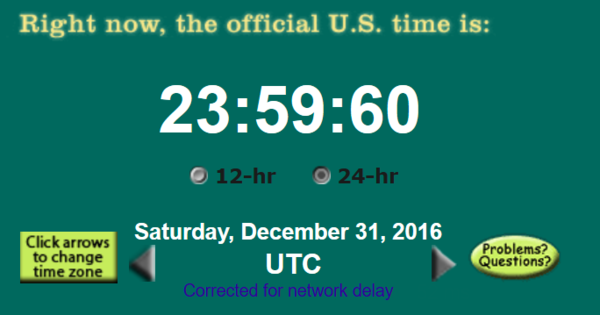Leap second
Screenshot of the UTC clock from time.gov during the leap second on December 31, 2016. In the U.S., the leap second took place at 18:59:60 local time on the East Coast, at 15:59:60 local time on the West Coast, and at 13:59:60 local time in Hawaii.
A leap second is a one-second adjustment that is occasionally applied to Coordinated Universal Time (UTC), to accommodate the difference between precise time (as measured by atomic clocks) and imprecise observed solar time (known as UT1 and which varies due to irregularities and long-term slowdown in the Earth’s rotation). The UTC time standard, widely used for international timekeeping and as the reference for civil time in most countries, uses precise atomic time and consequently would run … Continue Reading (18 minute read)